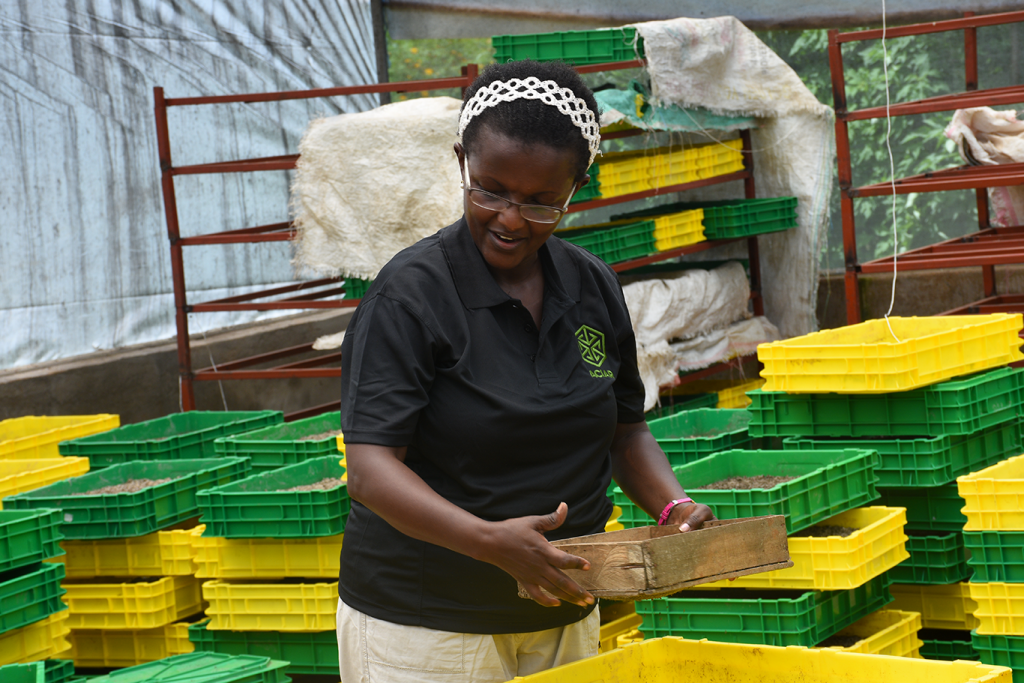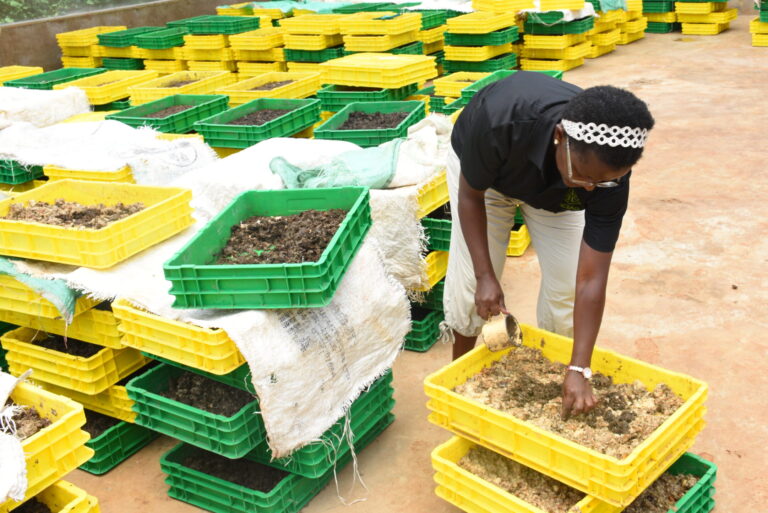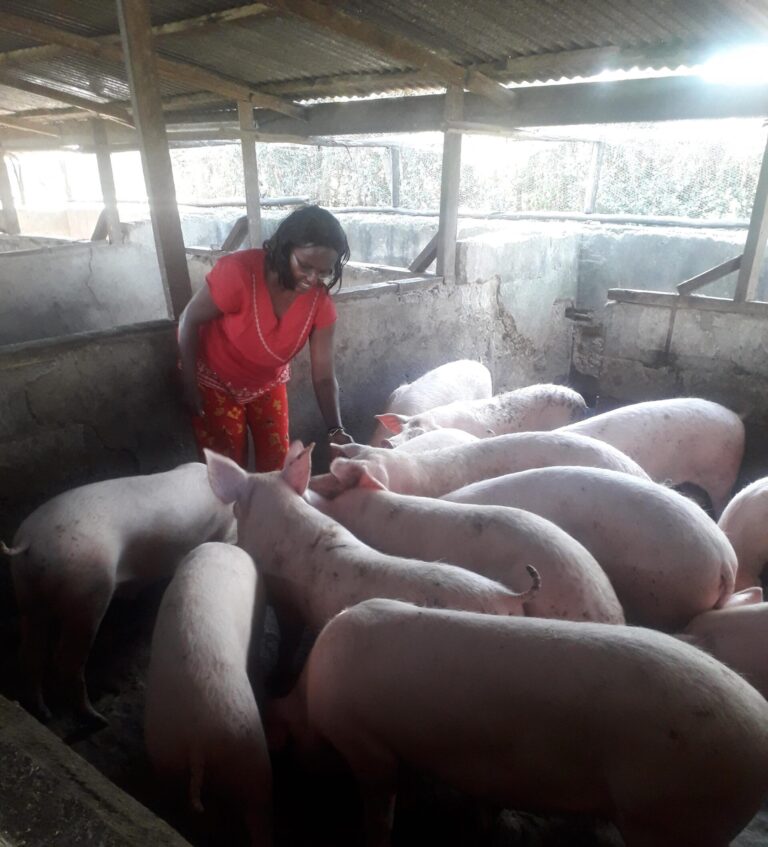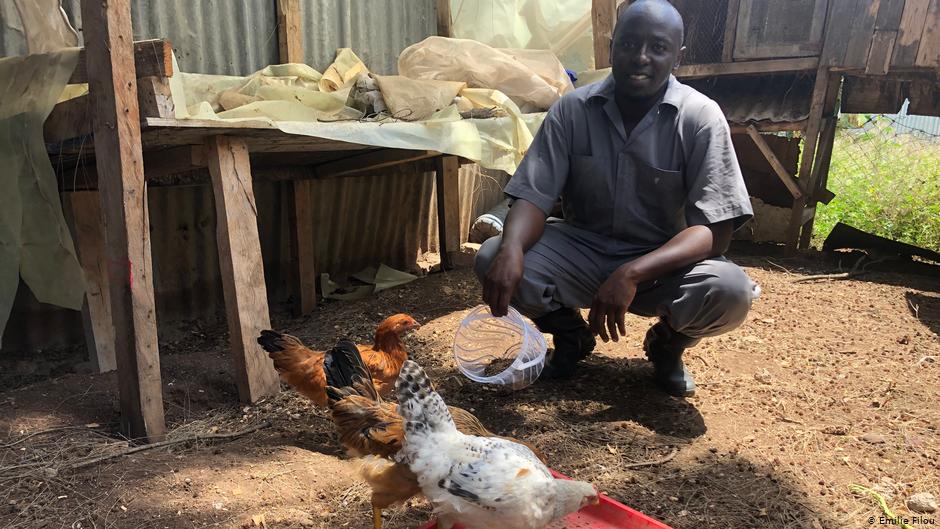Reduce the cost of feeding your chicken, pigs and fish with the Black Soldier Fly

Every time we interview a livestock farmer in Kenya, one of the major complaints we hear from them is the punitive cost of commercial feeds. Feeding livestock cost effectively is a major headache for most farmers. A black wasp-like insect by the name Black Soldier Fly (BSF) may hold the key to solving this problem that has burdened livestock farmers for decades.
“The most expensive component of raising animals is the protein cost in feeds, which accounts for 60 to 70 percent of the total production cost,” says Dr. Chrysantus Mbi Tanga, a research scientist specializing in insect-based feed at the International Centre of Insect Physiology and Ecology (ICIPE), a research institute headquartered in Kenya that wants to use insects to improve life for people in the tropics. “BSF are a lot more affordable. They grow on organic waste and within two weeks you can harvest them.”
The Black Soldier Fly is ideally suited for food production due to its rapid production cycle and high concentration of protein. The high percentage of protein in the larvae makes them an ideal source of food for a wide variety of animals. BSF contain up to 43% of protein and are rich in calcium and other nutrients.
A new generation of agricultural entrepreneurs in Kenya are using the larvae of black soldier flies as a sustainable alternative to fishmeal and soy. Rosanne Mwangi is one of the farmers that has adopted farming Black Soldier Fly larvae. “Brown, live gold,” she says with a broad grin as she scoops up two handfuls of squirming Black Soldier Fly larvae.

The flies Rosanne refers to as gold are interesting in that they have a closed life cycle. They are only alive only for a fleeting six weeks but during that time, they reproduce generously, laying 500-plus eggs in a single batch. The larvae hatches in around 4 days. The larvae feeds, and when they develop into flies they’ll lay eggs, starting the process over again.
The larvae stage is the most important stage in the life of the BSF as during this period they have the Superman-like ability to transform that waste into high-quality protein. They’re so efficient at this that there’s no bacteria in their waste once they’ve digested it. At this stage, they’re packed full of nutrients, as they’re looking to ingest as much as possible before they move to the fly stage of their life cycle. It is for this reason that the larvae are used in animal feed.

Rosanne has benefited immensely by using BSF to feed her chicken and which has resulted in about a 20 percent increase in earnings. “The BSF is a path to improving household incomes with a readily available resource, and that is really exciting,” says Rosanne.
Frederick Kimathi Githua is one of 1,300 farmers and entrepreneurs in Kenyan trained by ICIPE on to set up BSF production. Githua farms black soldier fly (BSF) on his urban small holding at the outskirts of Nairobi. What used to be a vegetable greenhouse is now houses stacks of trays full of yellowish larvae. Twice a week he feeds the larvae to his chickens and pigs. “They love it,” he says. “The chickens don’t even run; they just wait when I come out with the larvae.”

Commercial feed manufacturers are also embracing BSF as a protein source for their feeds. Charles Mwendia, CEO of Treasure Feeds, started replacing fishmeal with BSF in his poultry and pig feeds five years ago because of quality inconsistencies with omena. Other protein sources such as soy, cotton seed cake or sunflower seed cake are all imported. “BSF is the first local source of protein,” Mwendia says, pointing to an increasingly important consideration at a time when the coronavirus pandemic has exposed the fragility of international supply chains.
Despite the numerous advantages to farmers, the adoption of BSF as a food source for livestock in Kenya is not without challenges. Maryann Wanga, a trained vet and manager at BSF feed producer Insect Research, says convincing older farmers to switch is also a challenge. “You know the older generation, they call the larvae ‘worms,'” she says. “We have to do a lot of explaining and convince them that it’s working.”
Insect Research, keeps its own poultry and pigs to show farmers how their product works and says its BSF-fed pigs reach market weight a month earlier than standard fed counterparts, reducing feed costs by 15%. Just like in the case of Insect Research, Rosanne says her free-range chickens, which normally take about 24 weeks to be market-ready, are now going to market at 16 weeks after switching to BSF feed. Her pigs are ready for market in about six or six-and-a-half months, saving her one to two months.
Production of BSF is a simple straight forward process that any farmer can initiate with basic training. Here’s how it works. The BSF eggs are placed in tent-like structures along with organic waste where they incubate for three days and then hatch. You can use any organic waste that is readily such as potato peels, kitchen waste, over-ripe avocados or tomatoes. The larvae begin feeding on the waste immediately.
They grow over about 14 days and then all but 10 to 20 percent are harvested into feed. The remaining BSF perpetuate the colony. Within two weeks, they pass through the pupae stage before becoming flies. The flies live for about 10 to 16 days more on a diet of water only, and during that time they lay the eggs that begin the process again. Another outcome of the process is organic frass fertilizer, which can be sold as an additional value-added product or used in farmlands for increased crop productivity.
Taking something that is considered to be waste, and turning it into a higher value product while avoiding the use of chemical additives, Rosanne says, is her contribution to global sustainability and climate-smart agriculture. “It is really rewarding to see things grow,” she says. “It is a job that makes economic sense but you also have time to do other things. So now, I am teaching other farmers about how to raise BSF and use the larvae as feed supplements. It can really improve the household income of smallholder farmers.”
Hallo. Great story. Who among those mentioned in the story can i go to for training and starter kit?
Please contact ICIPE. Fredrick Githua has a YouTube Channel where you can learn more about BSF https://www.youtube.com/channel/UCIV-KXEY5zqIX8W2ahCyQEg . His WhatsApp contact is +254723829587
Am interested to get a training about how reduce the cost of feeding your chicken, pigs and fish with the Black Soldier Fly